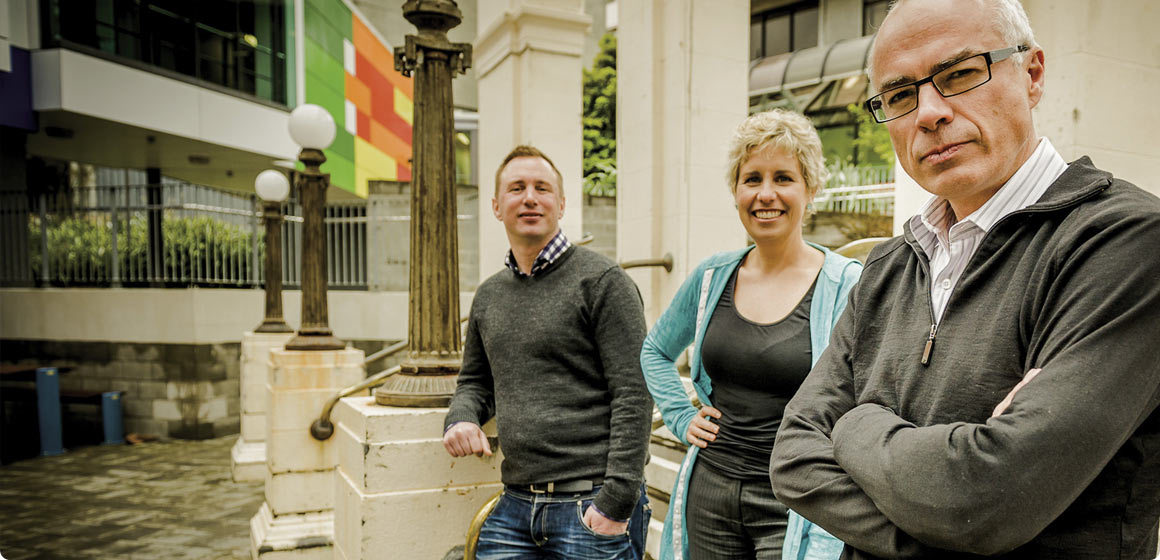
Cancer is the most significant cause of death in New Zealand, likely to affect one in three people at some stage in their lifetime, and accounts for around 30 per cent of all deaths. While there has been a steady improvement in survival rates for many cancers over the last two decades – largely because of early detection and treatment – researchers at the University of Otago, Wellington believe significant further progress can be made in reducing cancer mortality.
Professor Tony Blakely, Associate Professor Nick Wilson, Associate Professor Diana Sarfati and their team in the Burden of Disease, Epidemiology, Equity and Cost Effectiveness Programme are focusing on more effective analysis of how cancer and other diseases are prevented, detected, treated and managed.
Blakely's research aims to further reduce death rates by improving the timing and quality of interventions in the health system. This approach, through analysis of large amounts of health data, is already revealing that pathways of intervention and treatment do actually affect the survival of patients.
“Eight years ago when I started this process I was surprised to find, when sitting on various cancer committees, that there wasn't a clear idea about the impact of particular interventions on population health in terms of survival and health impact and, therefore, cost-effectiveness,” he says.
“That's when I started thinking about studies that would help policy-makers and health planners select the most effective cancer interventions.”
Among a series of studies, Blakely and colleagues have recently completed a comprehensive report, “Cancer Trends”, with the Ministry of Health which details progress in cancer survival from 1991 to 2004.
The research, led by PhD student Matthew Soeberg, investigated more than 21 different cancers using anonymously and probabilistically linked cancer to the census that allowed an accurate analysis of survival by ethnicity and income.
“Generally, the results are positive, which is the good news, with cancer survival significantly improving in New Zealand from 1991 to 2004. Averaged across all people diagnosed with a malignant cancer, their rate of death due to the cancer itself, or excess mortality, reduced by about 26 per cent for each decade,” he says.
Although the “Cancer Trends” report did not directly test reasons for this improvement, Blakely says these will include such things as earlier diagnosis, improved surgical treatments, better drugs and more effective pathways of care, among other factors.
Specific cancers that showed a strong improvement in survival include breast cancer (52 per cent decrease in excess mortality, once diagnosed, every decade) leukaemia (60 per cent decrease) and non-Hodgkin's lymphoma (44 per cent). However, other cancers – including lung and pancreatic cancer – have shown little improvement over time.
Despite these encouraging results, the “Cancer Trends” study also reveals significant differences in survival depending on income and ethnicity.
Although both Māori and non-Māori did show significant improvements over time, excess cancer mortality among Māori patients is still about 29 per cent higher than non-Māori cancer patients.
Similarly, people in the lowest third of household incomes had a 12 per cent higher excess mortality rate than people with higher incomes.
These results give added impetus to the current five-year research programme, Burden of Disease, Epidemiology, Equity and Cost-Effectiveness or BODE3.
“At present we're putting a lot of research into tracking pathways of care for particular diseases, including cancer. When these results are applied they should make a difference to the inequalities revealed in the 'Cancer Trends' report,” says Blakely.
“For instance, one of the reasons why people on low incomes and Māori have a poorer cancer survival rate is they take longer to go through the system, partly because of co-morbidities.”
Blakely says that BODE3 will help health planners accurately determine what interventions in future will provide the highest benefit for the health dollar and, thus, better patient survival.
26%
Averaged across all people, the rate of death due to the cancer itself reduced by about 26 per cent for each decade.
Funding
- Health Research Council of New Zealand
